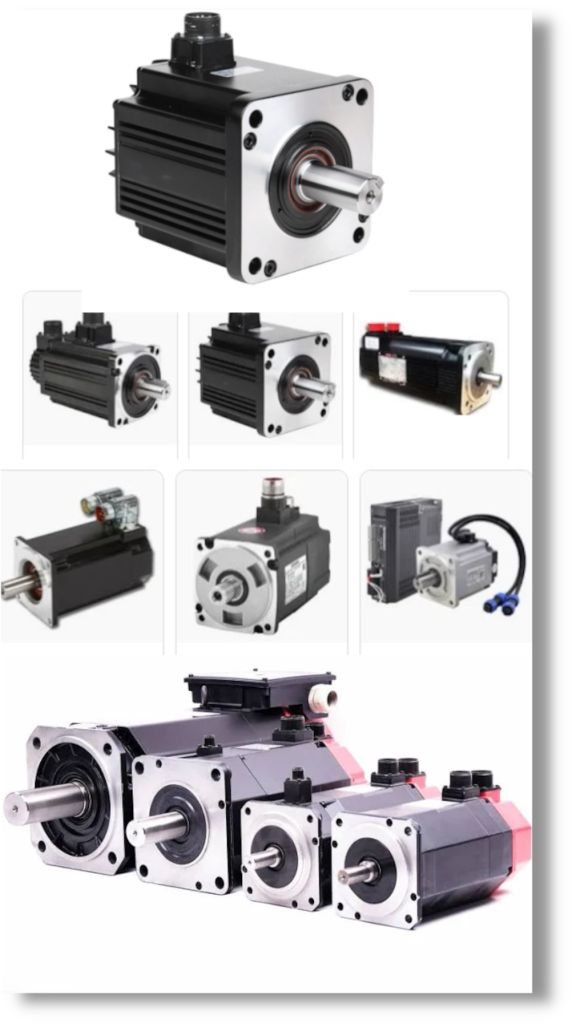Servo motors give you speed control, efficiency, and seamless interaction with other equipment in a motor control center.
Need Servo Motors or Other Automation Products?
Get Automation QuoteSell To Us
Got Electrical Equipment You Don't Need?

Reduce Your Electrical Inventories & Earn Cash
Sell My EquipmentPanelboard
Need a Panelboard for Your Project/Job?

Our Experienced Sales Engineers Can Help Design the Right Panelboard For You
Learn MoreTransformer Oil Testing
Is Your Transformer Due For Servicing?

Get Your Oil Analysis & Fluid Testing Done By Our NETA-Certified Techs
Learn MoreElectrical Product Resources
Product Training Product Safety Product Guides Product News Featured ProductsIn this post, we’ll consider reasons why upgrading or replacing your older servo motors with newer, more advanced models can be a good investment in your motor control center. Servo motors give you precise speed control, efficiency, and seamless interaction with other equipment. Let’s start by listing 10 benefits you’ll see after a servo motor upgrade.
10 Reasons to Upgrade or Replace a Servo Motor
Precision Control: Newer servo motors frequently include improved control algorithms and higher-resolution feedback devices, allowing for even finer precision control than older types. This increased precision can lead to tighter tolerances and higher product quality.
High-Speed Operation: Improvements in motor design and control technology have allowed newer servo motors to reach higher speeds while being stable and accurate. Compared to prior models, this innovation may result in faster production cycles and higher throughput.
Flexibility: Newer servo motors frequently have improved programming ability and communication capabilities, leading to more flexibility in responding to changing production requirements. They may also provide a broader range of operating modes and parameter settings, making them more useful in a variety of applications.
Energy Efficiency: Modern servo motors are meant to be energy efficient, with features like enhanced motor winding designs, optimized control algorithms, and energy recovery systems. These improvements could result in significant energy savings over older versions, lowering your operational costs and environmental effects.
Compact Design: Improvements in motor and magnet materials, along with improved manufacturing procedures, have allowed newer servo motors to give better power densities in smaller form factors. Newer models can provide the same performance as older ones in a more compact and smaller footprint, conserving space and making installation easier.
Low Maintenance: Newer servo motors tend to have greater durability and reliability as result of new developments in materials, coatings, and sealing processes. This can result in lower maintenance requirements and longer service durations than earlier versions, reducing your downtime and maintenance costs.
Enhanced Safety Features: Many newer servo motors include enhanced safety features including integrated fault detection and diagnostics, redundant sensors, and safe torque-off capabilities. Those features improve overall system safety and reliability, lowering the likelihood of accidents and production disruptions compared to older models.
High Torque-to-Inertia Ratio: Newer servo motors may use more advanced magnet materials and motor designs that enable higher torque-to-inertia ratios than earlier ones. This innovation allows for faster acceleration and deceleration rates, as well as more precise motion control, improving overall system performance and productivity.
Integration with Automation Systems: Today, servo motors are designed to work smoothly with Industry 4.0 and IoT-enabled automation systems, with standardized communication protocols, built-in diagnostics, and remote monitoring capabilities. This makes them easier to integrate and manage in connected production systems, resulting in higher overall efficiency and flexibility than older models.
Feedback Mechanisms: Current servo motors frequently include higher-resolution feedback devices, like optical encoders or absolute resolvers, that offer more accurate and dependable position and speed feedback than past types. This improved feedback offers tighter control loops and greater motion accuracy.

“Behind every smooth-running machine lies a world of motor control.”
Servo Motor Types and Applications in Manufacturing
Upgrading or replacing a servo motor? Whether you’re looking to improve precision in CNC machining or optimize efficiency in packaging machinery, this chart outlines servo motor types and example applications.
| Type of Servo Motor | Consideration | Example Servo Motor Application |
| DC Servo Motors | Use DC for motion. Affordable. | CNC machines: Precise tool positioning, improved machining. Robotic arms: Accurate assembly, high precision. |
| AC Servo Motors | Run on AC, higher power. | Industrial automation: High torque, fast response. Conveyor systems: Precise control, smooth material handling. |
| Brushed Servo Motors | Use brushes, need maintenance. | Printers: Cost-effective motion control. Textile machines: Accurate yarn tension. |
| Brushless Servo Motors | No brushes, less maintenance. | CNC machining centers: High torque, low maintenance. Packaging equipment: Fast motion, precise control. |
| Linear Servo Motors | Produce linear motion, precise. | Pick-and-place machines: Accurate component placement. CNC milling machines: Precise cutting, tight tolerances. |
| Torque Motors | High torque, low speed. | Rotary tables: Fast indexing, accurate positioning. Indexing equipment: Quick position changes, high precision. |
| Hollow Shaft Servo Motors | Have hollow shaft for integration. | Rotary index tables: Clean integration, reduced cable clutter. Robotic end-effectors: Versatile tooling, complex tasks. |
| High-Speed Servo Motors | Operate at high speeds. | Centrifuges: Rapid separation, high throughput. High-speed packaging machinery: Fast packaging, increased production. |
| Low-Inertia Servo Motors | Lightweight, rapid acceleration. | Robotics: Agile movement, precise manipulation. Semiconductor equipment: Fast positioning, high yield. |
| Rotary Servo Motors | Produce rotational motion, versatile. | CNC machining: Complex workpieces, reduced setup time. Industrial robots: Versatile manipulation, flexible automation. |
Questions About Replacing or Upgrading Servo Motors
(Select a Question to show Answer)
Resources: Electric Motor Control Replacement Parts Catalogs
Consult manufacturers’ motor control parts catalogs to find your existing servo part number. Many include cross references to find an equivalent new part number for upgrading your servo motor. We’ve curated some listings of components for your electrical motor control systems. From servo motors to drives, controllers, feedback devices, and more.
Eaton / Cutler-Hammer / Westinghouse Motor Control Part Catalog
Allen Bradley Motor Control Part Catalog
Telemechanique Motor Control Part Catalog
General Electric / GE Motor Control Part Catalog
Siemens / ITE Motor Control Part Catalog
ABB Motor Control Part Catalog
HONEYWELL Motor Control Part Catalog
WEG Motor Control Part Catalog
Federal Pacific Electric / American / FPE Motor Control
Square D / Schneider Electric Motor Control Part Catalog
Mitsubishi Motor Control Part Catalog
